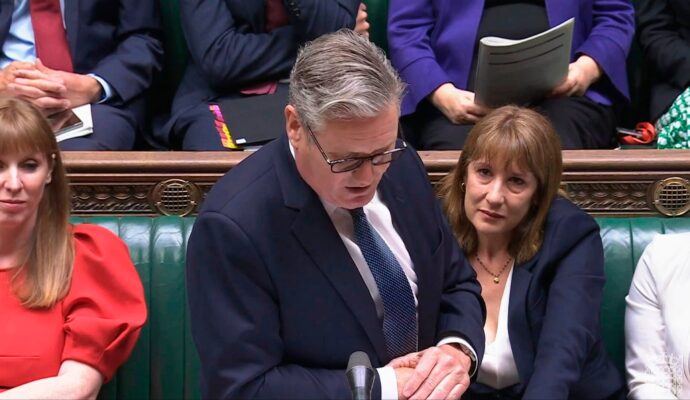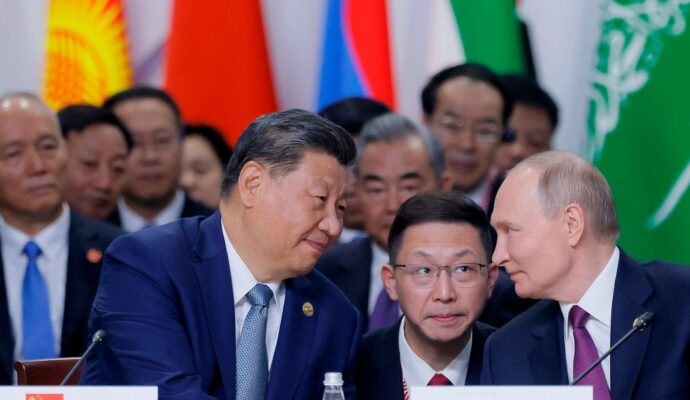Unlock the Editor’s Digest for free
Roula Khalaf, Editor of the FT, selects her favourite stories in this weekly newsletter.
Japan is mounting its most ambitious push in decades to revitalise its shipbuilding industry through consolidation and a proposed $7bn national fund, as one of the US’s closest allies tries to compete against China’s dominance of the sector.
Imabari Shipbuilding, the nation’s biggest shipbuilder by revenue, agreed last week to take a controlling 60 per cent stake in Japan Marine United to create a global number four that can go toe-to-toe with east Asian rivals such as the China State Shipbuilding Corporation and South Korea’s HD Hyundai Heavy Industries.
A special committee under the ruling party has also proposed to Prime Minister Shigeru Ishiba a ¥1tn ($7bn) public-private fund to modernise facilities and build “national shipyards” that the government can lease to private groups.
The reshaping of the country’s $21bn shipbuilding sector comes amid growing angst over China’s outsized role in the industry. China received 70 per cent of global ship orders last year, compared with 32 per cent seven years ago, and delivered four times as many vessels as Japan, according to Clarksons data.
US officials view strengthening Japan’s shipbuilding capabilities as a vital counterweight to Beijing. In tariff negotiations with Washington, Tokyo has proposed establishing a fund to jointly revitalise shipbuilding, which Trump administration officials support, according to people familiar with the matter.
Japan could also receive a boost from US penalties on Chinese-built vessels docking at American ports, as shipowners reassess the cost of owning made in China ships and the risk of further policies designed to penalise Chinese shipbuilders.
Japan’s share of global vessel deliveries shrank to 12 per cent in 2024 from a quarter in 2018. Despite a global boom in orders to replace ageing fleets, it secured only 6.7 per cent of orders last year in terms of compensated gross tonnage, a measurement of work required to build a ship.
The country’s rigid production capacity, shaped by limited space and difficulty in finding labour, meant domestic yards had “virtually no room for rapid expansion” to respond to rising demand, said Kenichi Doi, senior fellow at the Institute of Geoeconomics, a Japanese think-tank.
“If left unaddressed, Japan risks losing its shipbuilding industry, much like Europe and the US,” the ruling party’s special committee warned in its policy recommendations. “Losing the industry would threaten the country’s maritime logistics, economy and security.”
Imabari and JMU jointly launched Nihon Shipyard, focused on commercial vessel design, in 2021 after the former took a 30 per cent stake in its smaller rival.
But four years on, further consolidation has been deemed necessary to compete with east Asian rivals that hold a cost advantage and benefit from heavy government subsidies.
Imabari said turning JMU into a subsidiary would help Japan as global competition intensified and China and South Korea vied “for the lead in technological capabilities that are strengths of the Japanese shipbuilding industry”, which once had held 40 per cent market share in the 1990s.
Yukito Higaki, president of Imabari Shipbuilding, who became chair of the Japan Shipbuilding Industry Association last month, said he wanted Japan to nearly double its market share to 20 per cent and to take leadership in next-generation low-emission vessels, such as those fuelled by ammonia or methanol, by the 2030s.
The closer ties between Imabari and JMU, which both declined to provide financial details of the stake increase, come after multiple Japanese peers have exited the cut-throat business.
Mitsui E&S sold its remaining new-build shipping operations to Tsuneishi this year, Sumitomo Heavy Industries announced its withdrawal last year and Sasebo Heavy Industries now does only repairs and machinery.
Underlying Japan’s lack of price competitiveness are higher labour and raw material costs. One of the big challenges is maintaining and growing the industry’s workforce of 76,000 people in a rapidly ageing country.
The sector has recently resorted to immigrant labour, which now comprise almost a fifth of the labour pool, up from almost none a decade ago.
Tomohisa Takei, senior fellow at the Sasakawa Peace Foundation, said the cost advantage of South Korean and Chinese rivals had largely come from enormous state subsidies, but Japan had been far more cautious and taken a market-driven approach.
A study by the Europe-based Centre for Economic Policy Research estimated China provided $91bn of subsidies to shipbuilders between 2006 and 2013.
“As long as the Chinese and South Korean governments continue to subsidise shipyards, Japan will not be able to gain an advantage in shipbuilding competition,” said Takei, a retired admiral. “It is unlikely that any country would be against the Japanese government changing its policy.”
Data visualisation by Haohsiang Ko





